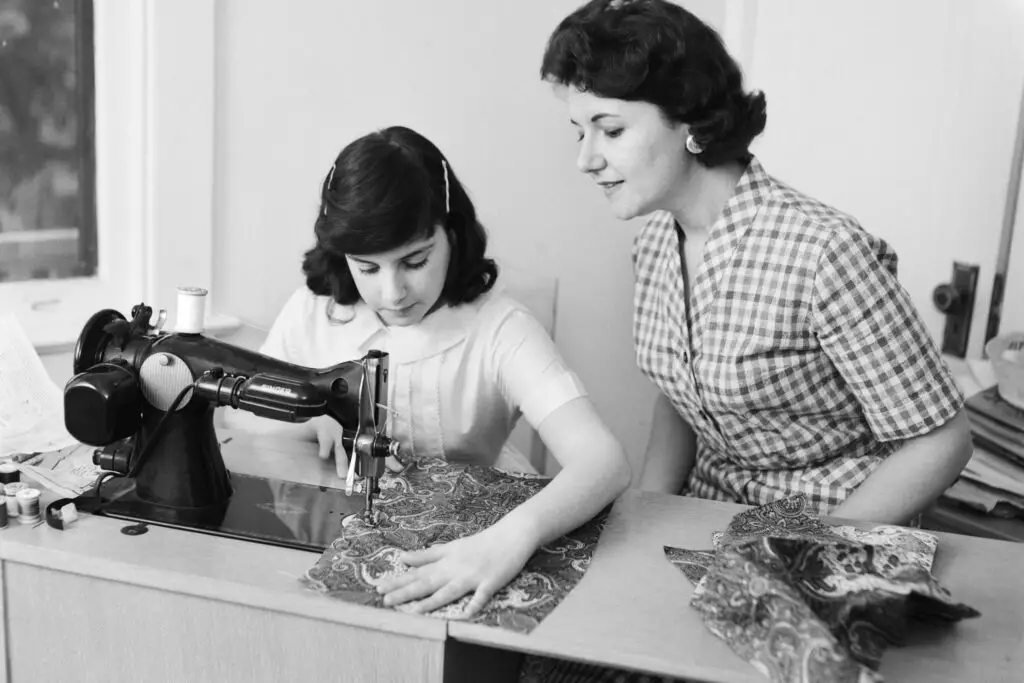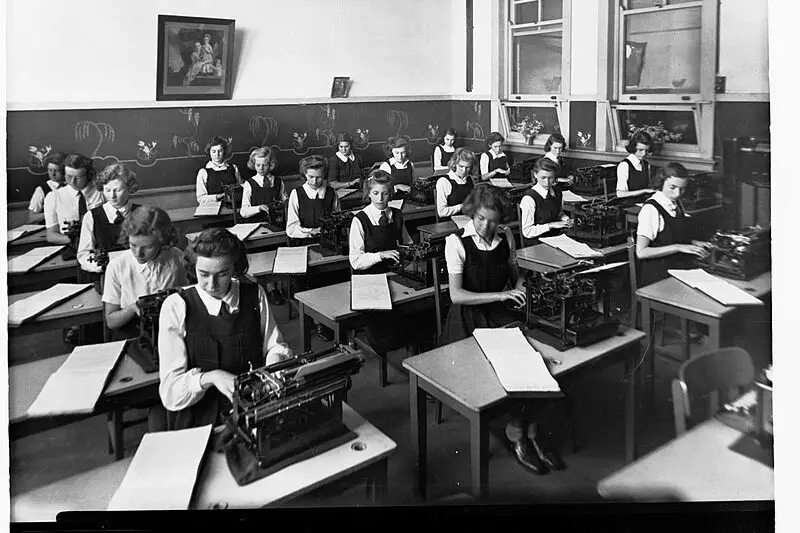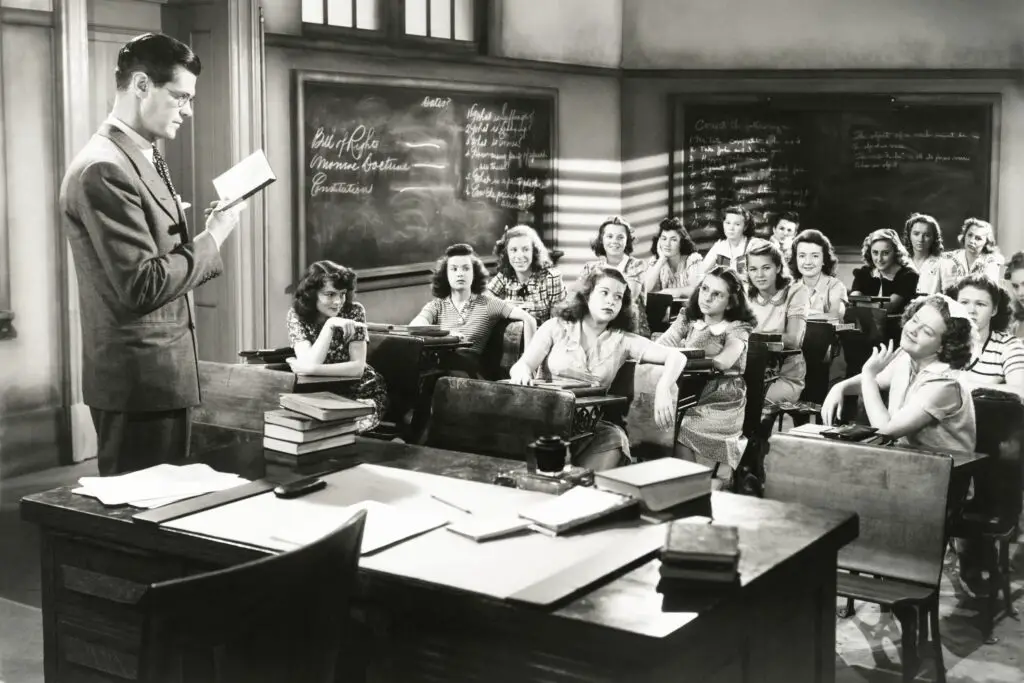1. Penmanship

In the early days of education, penmanship was given a lot of importance. Students spent hours learning to write in cursive, often practicing with ink pens on thick paper. The goal was for each letter to be formed perfectly, with a sense of elegance and precision. The focus on neatness was seen as a reflection of one’s character. Over time, however, as technology advanced and keyboards replaced pens, the need for perfect handwriting faded. The rise of typing classes and digital communication made it less important to know how to write neatly by hand. Still, many older generations recall the time when a perfect cursive signature was a source of pride. Today, penmanship is no longer a staple in many schools, as the emphasis has shifted toward digital literacy.
The slow disappearance of penmanship from the curriculum reflects broader changes in how we communicate. While it was once seen as an essential skill, today’s students are more likely to spend time mastering typing and text formatting rather than perfecting their handwriting. Some still argue that knowing how to write by hand remains valuable, especially in developing motor skills. However, the reality is that penmanship has quietly taken a back seat to more modern approaches to education.
2. Home Economics

Home economics, or “home ec,” was once a fundamental part of school curriculums across the United States. The subject taught practical skills like cooking, sewing, budgeting, and understanding nutrition. It was seen as essential for preparing students, especially girls, for domestic life. Students learned how to plan meals, manage household chores, and even repair clothing. While some schools continue to offer basic culinary or sewing courses, the once-comprehensive home economics programs have become rare. The shift toward STEM (science, technology, engineering, and mathematics) subjects has contributed to this decline. Additionally, the rise of convenience foods and specialized services like dry cleaning has lessened the perceived need for these skills.
However, some argue that home economics should make a comeback, as it teaches vital life skills that students will use throughout their lives. With more people cooking at home and looking to manage their finances wisely, there’s a growing call for schools to reintroduce these lessons. Even as home economics fades from traditional curriculums, many parents and educators still see its value in fostering independence and practical know-how.
3. Typing

Before computers became ubiquitous, typing classes were a staple of middle and high school education. Students would sit at typewriters or early computer keyboards to master the art of touch typing. The goal was to increase typing speed and accuracy, preparing students for a world where typing was key to nearly every job. The “home row” method, where students learned to rest their fingers on the middle keys, was drilled into their minds for hours. While typing was once considered a crucial skill, its importance has since diminished with the advent of more intuitive devices. Today, many students learn to use touchscreens before they ever get near a keyboard.
Despite this, typing remains a useful skill in today’s digital world. The ability to type quickly and accurately can save time in both academic and professional settings. Some argue that schools should still offer formal typing classes, as the skill is as relevant today as ever. The rise of voice-to-text software, however, may suggest that typing might soon follow penmanship into obscurity.
4. Latin

Latin was once a cornerstone of classical education, taught in many schools as a way to help students better understand language, culture, and history. Latin was seen as the key to mastering other Romance languages and even influenced many scientific and legal terms. It was a subject that distinguished the well-educated from the rest of society. The study of Latin gave students a glimpse into ancient Roman culture and literature, often through works of philosophers, poets, and historians. As schools modernized and curricula became more practical, Latin gradually faded away. The shift toward more contemporary languages like Spanish and French took priority in schools, as they were seen as more directly applicable to real-world communication.
Despite this, Latin still holds value for some. It’s often considered a key to understanding the roots of many English words, as well as the basis for much of Western literature and philosophy. Today, Latin can still be found in some specialized programs, but it’s no longer the mainstay of most school curricula.
5. Civil Defense

During the Cold War, civil defense classes were a crucial part of many school curriculums. Students learned how to react in the event of a nuclear attack, including how to build a bomb shelter and what to do in the aftermath. They were taught to duck and cover, a strategy designed to protect against blasts and radiation. While these lessons were rooted in real concerns about the possibility of nuclear war, they gradually became obsolete as the geopolitical landscape changed. The threat of nuclear war diminished, and civil defense classes faded from schools as a result.
Though the Cold War is over, some believe there’s still a need for basic emergency preparedness education. In today’s world, the focus has shifted toward other types of disaster preparedness, such as natural disasters or active shooter drills. While the civil defense lessons have long been forgotten, they are a reminder of how the curriculum has adapted to changing global and political circumstances.
6. Latin American History

While U.S. history is a core part of the curriculum, the study of Latin American history has been largely neglected in many schools. In the past, students learned little about the rich and diverse histories of countries in Latin America. The focus was typically on European or North American history, leaving gaps in understanding the development of countries like Mexico, Argentina, and Brazil. Over the years, however, there has been a push to integrate more diverse perspectives into the curriculum. The importance of understanding global history is becoming increasingly recognized, yet Latin American history is still often overlooked.
Despite this, the study of Latin American history is slowly gaining more attention in higher education and some middle schools. Understanding the region’s historical and cultural influence is crucial for students who want to be well-informed global citizens. In the future, it’s likely that Latin American history will find a more prominent place in school curricula as the world becomes more interconnected.
7. Industrial Arts

In many schools, industrial arts was once a popular subject, where students learned skills like woodworking, metalworking, and basic engineering. The classes were meant to prepare students for careers in manufacturing or trades that required hands-on skills. In these courses, students would design and build practical projects, such as furniture or small machines. Over time, however, industrial arts started to disappear from schools as the job market shifted. As manufacturing jobs became less accessible in many areas and technology evolved, the demand for these skills declined.
Despite its decline, there’s still a place for industrial arts in education. The growth of the maker movement and the increasing interest in DIY projects and home improvement have sparked renewed interest in learning these types of trades. Today, vocational training is often available outside traditional school settings, but it remains a valuable skill for students pursuing non-college career paths.
8. Moral Science

Moral science, or ethics, was once an important part of many school curriculums, especially in the earlier parts of the 20th century. It focused on teaching students the difference between right and wrong, as well as the values that were considered essential for a functioning society. These lessons included discussions on honesty, integrity, and fairness, and they aimed to shape students into responsible citizens. However, as the school system became more focused on academic subjects and standardized testing, moral science slowly disappeared from the curriculum.
Although moral science is no longer a standard subject in most schools, some argue it should make a comeback. The rise of social issues and debates about ethics in society today suggests that teaching students how to navigate moral dilemmas is more important than ever. While some schools still offer character education programs, the formal study of ethics is far less common than it used to be.
9. Shorthand

Shorthand was once a common subject in high schools and vocational schools, as it was seen as an essential skill for secretaries, journalists, and other professionals. The system allowed students to take notes or transcribe spoken words quickly, using abbreviated symbols and techniques. By mastering shorthand, students were able to keep up with fast-paced environments and document conversations, speeches, and meetings in real time. As technology advanced, however, with the advent of voice recorders, transcription software, and digital note-taking, the need for shorthand dwindled.
While shorthand is rarely taught in schools today, it’s still used by some professionals who prefer the speed and efficiency it offers. However, with modern tools like speech-to-text software, it’s unlikely to make a strong comeback. Still, there’s something nostalgic about the art of shorthand, a skill that once allowed people to keep up with the world at lightning speed.
10. Sewing

Sewing was a skill many students once learned in school, especially in home economics classes. Students learned how to make their own clothes, repair items, and understand fabric types and patterns. It was considered an essential life skill, especially in an era when clothes were mended rather than replaced. As mass production made clothing cheaper and more accessible, the need for these skills diminished. Today, sewing is largely taught as an extracurricular hobby or in specialty classes rather than as part of the core curriculum.
Despite its disappearance from most schools, sewing remains a useful and creative skill. Many people today take it up as a hobby or use it for DIY projects. With the growing interest in sustainability and upcycling, some believe there’s a resurgence of interest in learning how to sew, even if it’s no longer widely taught in schools.
11. Agriculture

Agriculture classes were once an essential part of education, especially in rural areas where farming was a major part of daily life. Students learned everything from planting crops to raising animals, giving them the tools to contribute to the agricultural community. These classes taught students not only how to grow food but also how to understand the science behind it. Over time, however, as cities grew and people became more disconnected from agriculture, these classes slowly faded away. The rise of the modern food industry made it less necessary for students to know the ins and outs of farming.
In recent years, however, there’s been a renewed interest in agricultural education, especially as concerns about sustainability and food security grow. Many schools are beginning to offer agricultural science courses once again, focusing on topics like sustainability, food production, and the environment. The knowledge gained in these classes is more relevant than ever, especially as the world faces the challenges of feeding a growing population.
12. Astronomy

Astronomy was once a captivating subject for students, who would study the stars, planets, and galaxies. Early curricula emphasized the wonders of the universe, and students were taught to use telescopes and star charts to explore the night sky. Astronomy helped foster a sense of curiosity and wonder about the world beyond Earth. However, as technology improved, more advanced scientific subjects took precedence, and astronomy classes became less common. Today, while students still learn about space in science class, specialized astronomy courses are rare.
Despite this, there’s still a fascination with space, and many people enjoy stargazing and following developments in space exploration. With the rise of private space companies and increased interest in planetary exploration, there may be a resurgence of interest in teaching astronomy as a standalone subject. Until then, it remains a topic more often explored in casual discussions than in formal educational settings.
13. Logic

Logic classes were once a key part of the curriculum in many high schools. Students were taught to think critically and reason through problems using formal rules and systems. Logic was seen as essential for developing the skills needed for philosophy, law, and even science. However, as the curriculum became more focused on standardized testing and specific subjects like math and English, logic classes began to disappear. While students still encounter elements of logic in math and science, formal courses on the subject are no longer common.
Some argue that logic should be reintroduced to help students develop better reasoning skills. In an age of misinformation, critical thinking has never been more important. Reintroducing logic into the curriculum could help students navigate complex information and make more informed decisions. The debate continues on whether schools should once again prioritize logic as part of a well-rounded education.
14. Classical Music

Classical music education was once a cornerstone of the school experience. Students were introduced to the works of composers like Beethoven, Mozart, and Bach, learning about musical structure and theory. These classes not only exposed students to high art but also helped develop their listening skills and emotional intelligence. Over the years, however, classical music began to lose its place in the curriculum. With the rise of popular music and changes in cultural tastes, classical music education slowly dwindled.
However, some argue that classical music still has a valuable place in modern education. It teaches discipline, patience, and appreciation for the arts, qualities that benefit students in all areas of life. While fewer students may be learning classical music in school today, its influence can still be felt in everything from film scores to modern pop music.
